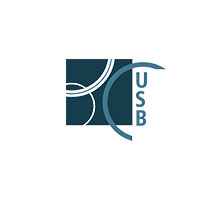Martin-Higueras, Cristina  ORCID: 0000-0003-1139-4642, Garrelfs, Sander F., Groothoff, Jaap W., Jacob, Dorrit E., Moochhala, Shabbir H., Bacchetta, Justine, Acquaviva, Cecile, Zaniew, Marcin, Sikora, Przymyslaw, Beck, Bodo B. and Hoppe, Bernd
(2021).
A report from the European Hyperoxaluria Consortium (OxalEurope) Registry on a large cohort of patients with primary hyperoxaluria type 3.
Kidney Int., 100 (3).
S. 621 - 636.
NEW YORK:
ELSEVIER SCIENCE INC.
ISSN 1523-1755
ORCID: 0000-0003-1139-4642, Garrelfs, Sander F., Groothoff, Jaap W., Jacob, Dorrit E., Moochhala, Shabbir H., Bacchetta, Justine, Acquaviva, Cecile, Zaniew, Marcin, Sikora, Przymyslaw, Beck, Bodo B. and Hoppe, Bernd
(2021).
A report from the European Hyperoxaluria Consortium (OxalEurope) Registry on a large cohort of patients with primary hyperoxaluria type 3.
Kidney Int., 100 (3).
S. 621 - 636.
NEW YORK:
ELSEVIER SCIENCE INC.
ISSN 1523-1755
Abstract
Outcome data in primary hyperoxaluria type 3 (PH3), described as a less severe form of the PH's with a low risk of chronic kidney disease, are scarce. To investigate this, we retrospectively analyzed the largest PH3 cohort reported so far. Of 95 patients, 74 were followed over a median of six years. Median age of first symptoms and diagnosis were 1.9 and 6.3 years, respectively. Urolithiasis was the major clinical feature observed in 70% of pediatric and 50% of adult patients. At most recent follow-up available for 56 of the 95 patients, 21.4% were in chronic kidney disease stages 2 or more. For better characterization, samples from 49 patients were analyzed in a single laboratory and compared to data from patients with PH1 and PH2 from the same center. Urinary oxalate excretion was not significantly different from PH1 and PH2 (median: 1.37, 1.40 and 1.16 mmol/1.73m(2)/24 hours for PH1 not responsive to vitamin B6, PH2, and PH3, respectively) but was significantly higher than in vitamin B6 responsive patients with PH1. Urinary oxalate excretion did not correlate to stone production rate nor to estimated glomerular filtration rate. Normocitraturia was present even without alkalinisation treatment; hypercalciuria was found rarely. Median plasma oxalate was significantly different only to the vitamin B6-unresponsive PH1 group. Thus, PH3 is more comparable to PH1 and PH2 than so far inferred from smaller studies. It is the most favorable PH type, but not a benign entity as it constitutes an early onset, recurrent stone disease, and kidney function can be impaired.
| Item Type: | Journal Article | ||||||||||||||||||||||||||||||||||||||||||||||||
| Creators: |
|
||||||||||||||||||||||||||||||||||||||||||||||||
| URN: | urn:nbn:de:hbz:38-601373 | ||||||||||||||||||||||||||||||||||||||||||||||||
| DOI: | 10.1016/j.kint.2021.031 | ||||||||||||||||||||||||||||||||||||||||||||||||
| Journal or Publication Title: | Kidney Int. | ||||||||||||||||||||||||||||||||||||||||||||||||
| Volume: | 100 | ||||||||||||||||||||||||||||||||||||||||||||||||
| Number: | 3 | ||||||||||||||||||||||||||||||||||||||||||||||||
| Page Range: | S. 621 - 636 | ||||||||||||||||||||||||||||||||||||||||||||||||
| Date: | 2021 | ||||||||||||||||||||||||||||||||||||||||||||||||
| Publisher: | ELSEVIER SCIENCE INC | ||||||||||||||||||||||||||||||||||||||||||||||||
| Place of Publication: | NEW YORK | ||||||||||||||||||||||||||||||||||||||||||||||||
| ISSN: | 1523-1755 | ||||||||||||||||||||||||||||||||||||||||||||||||
| Language: | English | ||||||||||||||||||||||||||||||||||||||||||||||||
| Faculty: | Unspecified | ||||||||||||||||||||||||||||||||||||||||||||||||
| Divisions: | Unspecified | ||||||||||||||||||||||||||||||||||||||||||||||||
| Subjects: | no entry | ||||||||||||||||||||||||||||||||||||||||||||||||
| Uncontrolled Keywords: |
|
||||||||||||||||||||||||||||||||||||||||||||||||
| URI: | http://kups.ub.uni-koeln.de/id/eprint/60137 |
Downloads
Downloads per month over past year
Altmetric
Export
Actions (login required)
 |
View Item |
